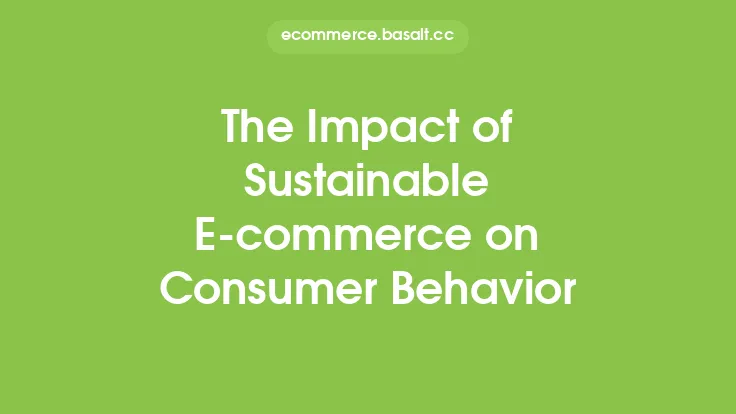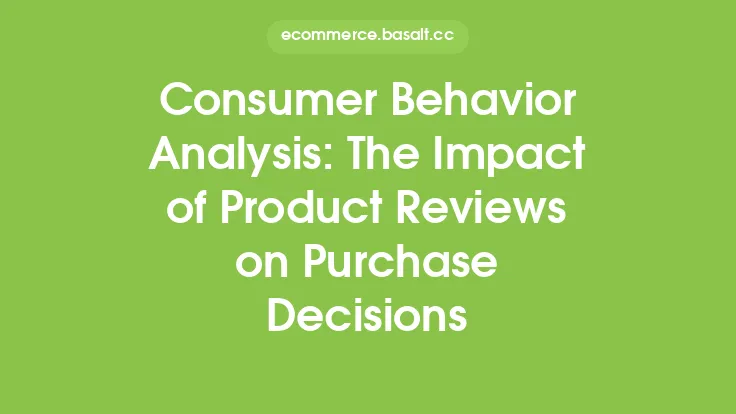The world of e-commerce has become increasingly competitive, with numerous online retailers vying for the attention of consumers. One crucial aspect that can make or break an online business is its pricing strategy. The way prices are set and presented can significantly influence consumer behavior, ultimately affecting sales, revenue, and customer loyalty. In this article, we will delve into the influence of pricing strategies on consumer behavior in online shopping, exploring the various tactics used by e-commerce businesses to attract and retain customers.
Introduction to Pricing Strategies
Pricing strategies refer to the methods used by businesses to determine the prices of their products or services. In the context of e-commerce, pricing strategies are critical, as they can impact consumer perception, purchasing decisions, and overall shopping experience. There are several pricing strategies that online retailers can employ, including penetration pricing, skimming, bundle pricing, and dynamic pricing. Each strategy has its advantages and disadvantages, and the choice of strategy depends on various factors, such as the target audience, market conditions, and business goals.
Types of Pricing Strategies
There are several types of pricing strategies that e-commerce businesses can use to influence consumer behavior. Penetration pricing, for example, involves setting low prices to attract new customers and gain market share. This strategy is often used by new entrants in the market or by businesses that want to increase their customer base quickly. Skimming, on the other hand, involves setting high prices to maximize profits, often used by businesses that offer unique or premium products. Bundle pricing involves offering multiple products at a discounted price, which can encourage customers to buy more. Dynamic pricing, also known as price optimization, involves adjusting prices in real-time based on demand, competition, and other market factors.
The Psychology of Pricing
Pricing strategies can have a significant psychological impact on consumers. For instance, the use of odd pricing (e.g., $9.99 instead of $10) can make products appear cheaper than they actually are. Similarly, the use of anchoring (e.g., comparing a product to a more expensive alternative) can make products appear more reasonably priced. Additionally, the use of scarcity tactics (e.g., limited-time offers or limited availability) can create a sense of urgency, encouraging customers to make a purchase. Understanding the psychology of pricing is essential for e-commerce businesses, as it can help them develop effective pricing strategies that influence consumer behavior.
The Impact of Pricing on Consumer Behavior
Pricing strategies can have a significant impact on consumer behavior, influencing purchasing decisions, customer loyalty, and overall shopping experience. For example, low prices can attract price-sensitive customers, while high prices can attract customers who are willing to pay for premium products. Additionally, pricing strategies can influence consumer perception of product quality, with higher prices often associated with higher quality. Furthermore, pricing strategies can impact customer loyalty, with businesses that offer competitive prices and discounts often retaining customers more effectively.
Pricing Transparency and Consumer Trust
Pricing transparency is critical in e-commerce, as it can impact consumer trust and loyalty. Businesses that are transparent about their pricing, including any additional fees or charges, are more likely to build trust with their customers. On the other hand, businesses that are opaque about their pricing or engage in deceptive pricing practices can damage their reputation and lose customers. Additionally, pricing transparency can influence consumer behavior, with customers more likely to make a purchase from businesses that are upfront about their prices.
The Role of Technology in Pricing Strategies
Technology plays a significant role in pricing strategies, enabling e-commerce businesses to adjust prices in real-time based on market conditions, demand, and competition. For example, algorithms can be used to analyze market data and adjust prices accordingly, while machine learning can be used to predict demand and optimize prices. Additionally, technology can enable businesses to offer personalized pricing, tailoring prices to individual customers based on their purchasing history and behavior.
Best Practices for Pricing Strategies
To develop effective pricing strategies, e-commerce businesses should follow several best practices. First, they should conduct market research to understand their target audience, including their willingness to pay and price sensitivity. Second, they should analyze their competition, including their pricing strategies and market positioning. Third, they should consider the psychological impact of pricing, including the use of odd pricing, anchoring, and scarcity tactics. Finally, they should be transparent about their pricing, including any additional fees or charges, to build trust with their customers.
Conclusion
In conclusion, pricing strategies play a critical role in influencing consumer behavior in online shopping. By understanding the various pricing strategies, including penetration pricing, skimming, bundle pricing, and dynamic pricing, e-commerce businesses can develop effective tactics to attract and retain customers. Additionally, by considering the psychology of pricing, pricing transparency, and the role of technology, businesses can optimize their pricing strategies to maximize sales, revenue, and customer loyalty. As the e-commerce landscape continues to evolve, it is essential for businesses to stay up-to-date with the latest pricing strategies and best practices to remain competitive and succeed in the online market.





